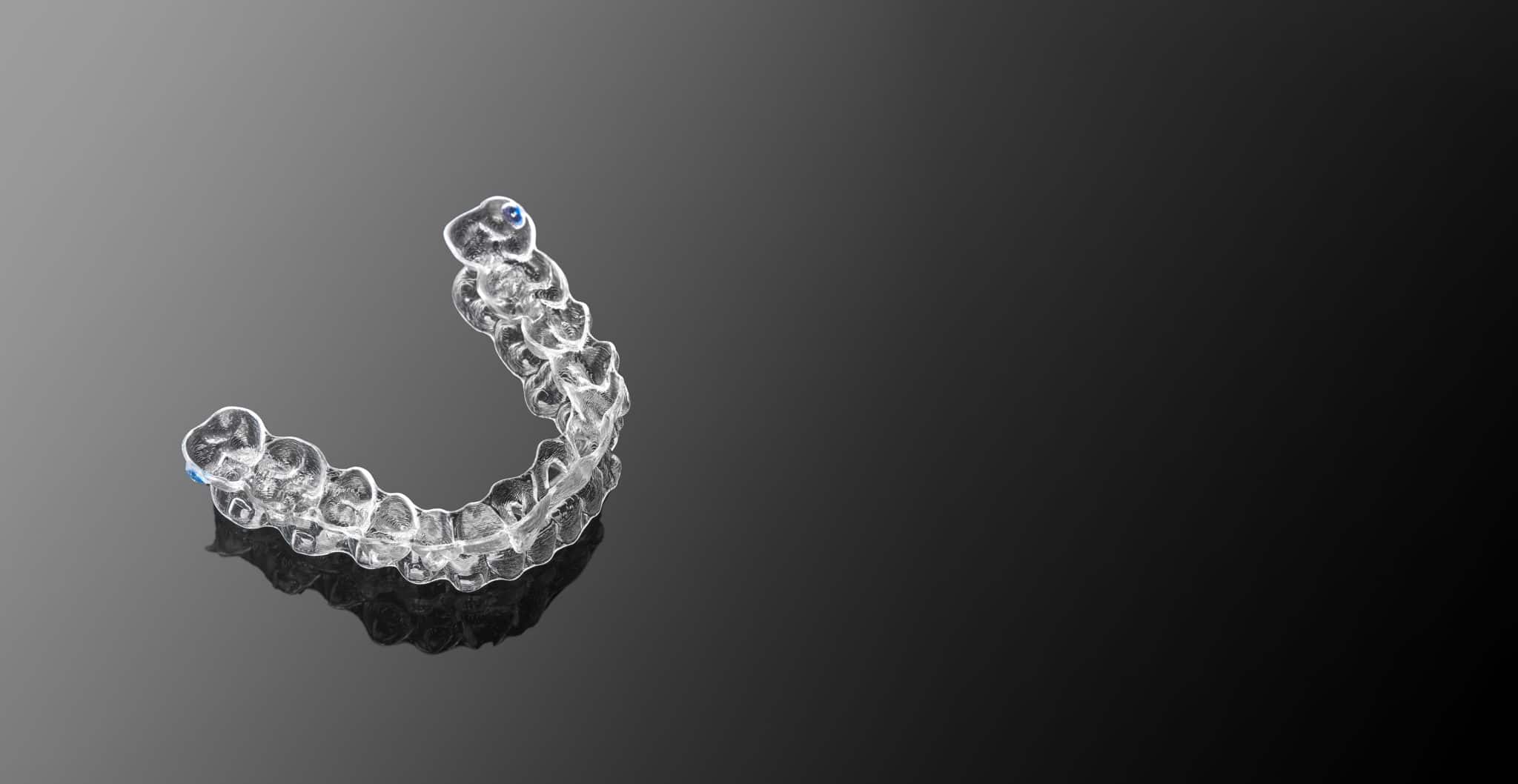There are numerous options available to straighten teeth without braces. Modern digital advances have revolutionized the orthodontic industry to allow for possibilities that had not existed a couple of decades ago. But with some new alternatives to traditional braces, you may wonder which is best for you, and better yet, what are the pros and cons of each?
In this article, we’ll talk about the options you have available in your quest for straighter teeth without braces.
Clear aligners (in-office)

When you think of clear aligners at a dentist, the brand that usually comes to mind is Invisalign. The company was started in the late 90s, and was the first to the scene for revolutionizing the method of braces with a less noticeable treatment. Invisalign was first and is the largest in the orthodontic industry. Think of Invisalign how people think of Kleenex in regards to tissues. It’s first to mind, but there are other brands too.
So when we’re talking about Invisalign, the generic term we’re talking about is called clear aligners.
Clear aligners are a system for straightening teeth. A dentist takes molds of the teeth. Software is used to idealize a result, and it determines all the movements required to get from start to finish.
The software creates a series of aligners that have incremental changes in shape and slowly migrate the teeth toward the desired final result.
From the patient perspective, the patient has to change each aligner to the next in the series every 10-14 days. Here’s the trick to have things go well.
In-office treatment with clear aligners typically boils down to two keys for success:
- Wearing the aligners the recommended amount of time, which is typically 20-22 hours per day and,
- Maintaining good oral hygiene during the treatment.
It sounds simple, and it is, but there are some more details that you should know. Its not just about the software. For teeth to move properly, the dentist also needs to make some adjustments in the office.
Often the dentist will have to place tooth-colored buttons on the teeth. The buttons are called “attachments” and help clear aligners gain leverage to move the teeth.
The dentist may also need to make space in the mouth by adjusting the shape of some teeth. You can imagine that if teeth are crowded, it’s because they lack space. Hence, crowds are stuck in a tight space. The same happens with teeth.
So to align them, they need to have a room. The dentist determines how much space is needed and can reshape the teeth to allow the teeth to move properly in the jaw.
Some of you may be hesitant to have your teeth adjusted for Invisalign. But I want to reiterate the importance of space when aligning teeth. Space is critical. If there’s not enough space when the teeth are aligned, it ultimately can change the overbite or overjet. This crowds the jaw space when opening and closing, increasing the risk of TMJ disorder.
Benefits of clear aligners
The benefit of clear aligner treatment over traditional braces is that clear aligners are more discreet. The aligners are clear and any attachments placed on the teeth are tooth-colored. The timeframe for clear aligners as compared to traditional braces is generally the same in most cases.
Disadvantages of clear aligners
The disadvantage of clear aligner treatment is in regards to compliance. With traditional braces, the braces are fixed in place and the dentist has more control over the treatment. However, with clear aligner treatment, the patient is entrusted to comply with following the treatment as they are instructed.
Clear aligners (at-home)
It’s no secret that people want to straighten teeth without braces. Because of that several companies offer treatment at home under a licensed dentist’s guidance in a telehealth model.
The big takeaway here is that all the standards of care of clear aligner in-office treatment, should also apply to at-home treatment.
The software and aligners used by at-home clear aligner telehealth providers is quite similar. However, where the challenges lie with these treatments is in regards to the adjunctive treatment that can only be completed in a dental office. For example, we talked a lot about adjusting the teeth to make space. That’s obviously only something that can be completed by a dentist or orthodontist. So make sure the DIY clear aligner company has partnered with offices that are able to do these procedures.
Because, what’s the worst that can happen? Symptoms of temporomandibular joint disorder such as bruxism, headaches, or muscle tension.
The point is it’s not just about the teeth. The jaws have to match too.
So here’s my advice if you are considering DIY orthodontics. Be sure, you feel comfortable with the treatment plan and ask the telehealth provider sufficient questions to feel confident your case will avoid the common pitfalls.
Veneers

Veneers are a way of straightening the teeth without committing to braces or even clear aligners. The concept of veneers is like renovating a house. It’s the same house, but with some modifications and new finishes, the house can look completely different.
During veneer preparation, a dentist reshapes the exterior surface of the teeth. He or she then makes a mold of the mouth and custom designs ceramic shells that are bonded onto the surface of the teeth. Veneers can change the alignment of the teeth, but they can also change the size, shape, and color.
Veneers are the right choice for patients who would like a dramatic result and may benefit from other changes in addition to the alignment, such as whitening or fixing worn/broken teeth. They are also a good choice for people who don’t want to commit to months or years of straightening their teeth with orthodontics. Veneers can improve the alignment of the teeth in as little as a few weeks.
The disadvantage of veneers is that tooth structure needs to be removed. Therefore, if you have healthy teeth which are satisfactory shape and color, it’s usually recommended to try clear aligners first.
Wrap Up: Straighten Teeth Without Braces
We’re living in a good time. If you’re an adult who wants to straighten your teeth without braces, you’re in luck. There are several good options available to avoid showing a metal smile at your next job interview.
As we discussed each option has pros and cons, and some options may be best suited for one person over another. Speak with a dentist you trust and gather their feedback before committing to any one decision.


